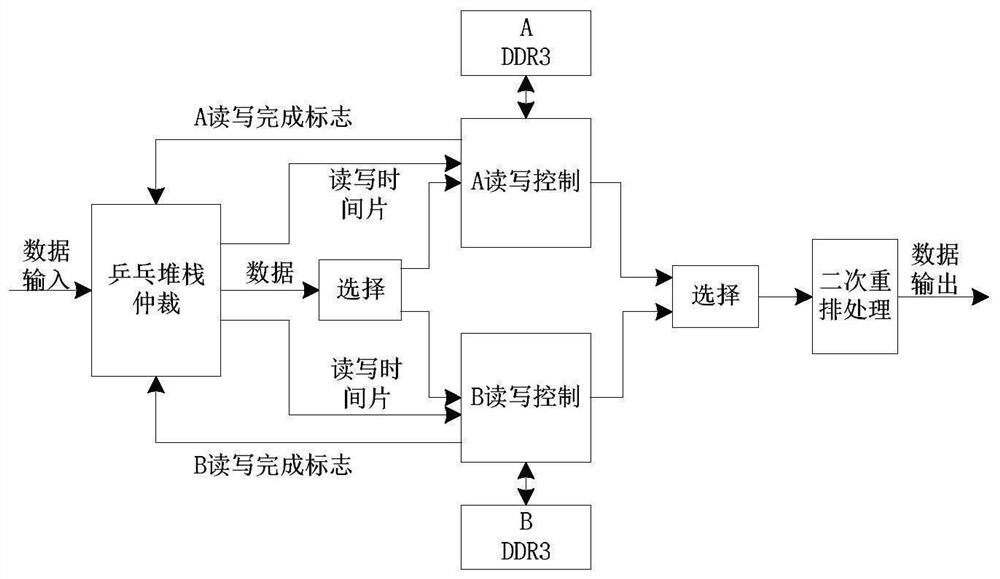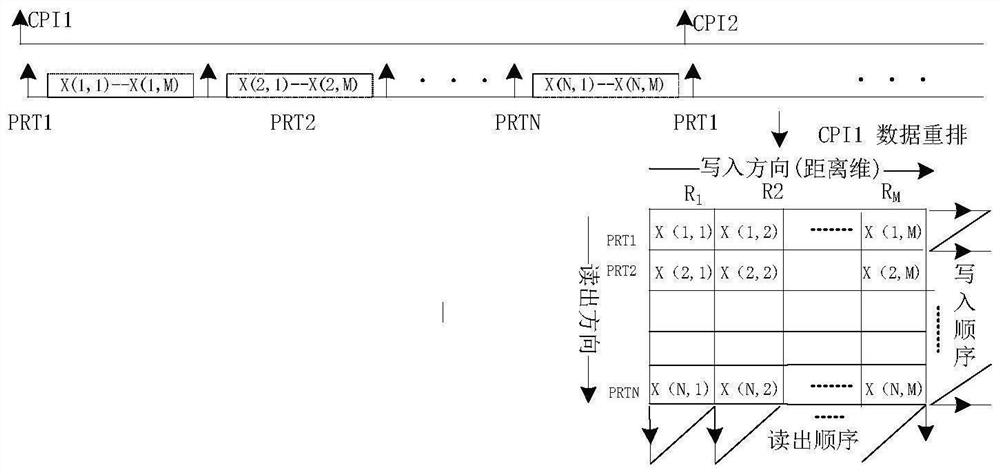Dynamic ping-pong stack type data rearrangement implementation method based on DDR3 (Double Data Rate 3)
A technology of ping-pong stack and data rearrangement, which is applied in the direction of electrical digital data processing, static memory, digital memory information, etc., can solve the problem that the instantaneous large amount of data cannot be processed, and achieve strong real-time system response, large dynamic range, and dynamic The effect of balance and flexibility
- Summary
- Abstract
- Description
- Claims
- Application Information
AI Technical Summary
Problems solved by technology
Method used
Image
Examples
Embodiment Construction
[0028] In order to make the object, technical solution and advantages of the present invention clearer, the present invention will be further described in detail below in conjunction with the accompanying drawings and embodiments. It should be understood that the specific embodiments described here are only used to explain the present invention, not to limit the present invention. In addition, the technical features involved in the various embodiments of the present invention described below may be combined with each other as long as they do not conflict with each other.
[0029] The present invention is realized by utilizing the FPGA platform to read and write two clusters of DDR3 memories plugged in. The number of pulse repetitions in a coherent processing interval (CPI) is configured as N, the number of beams in a single pulse repetition period (PRT) is L, and the number of distance units in a single pulse repetition period is M.
[0030] The principle of data rearrangemen...
PUM
 Login to View More
Login to View More Abstract
Description
Claims
Application Information
 Login to View More
Login to View More - R&D
- Intellectual Property
- Life Sciences
- Materials
- Tech Scout
- Unparalleled Data Quality
- Higher Quality Content
- 60% Fewer Hallucinations
Browse by: Latest US Patents, China's latest patents, Technical Efficacy Thesaurus, Application Domain, Technology Topic, Popular Technical Reports.
© 2025 PatSnap. All rights reserved.Legal|Privacy policy|Modern Slavery Act Transparency Statement|Sitemap|About US| Contact US: help@patsnap.com



